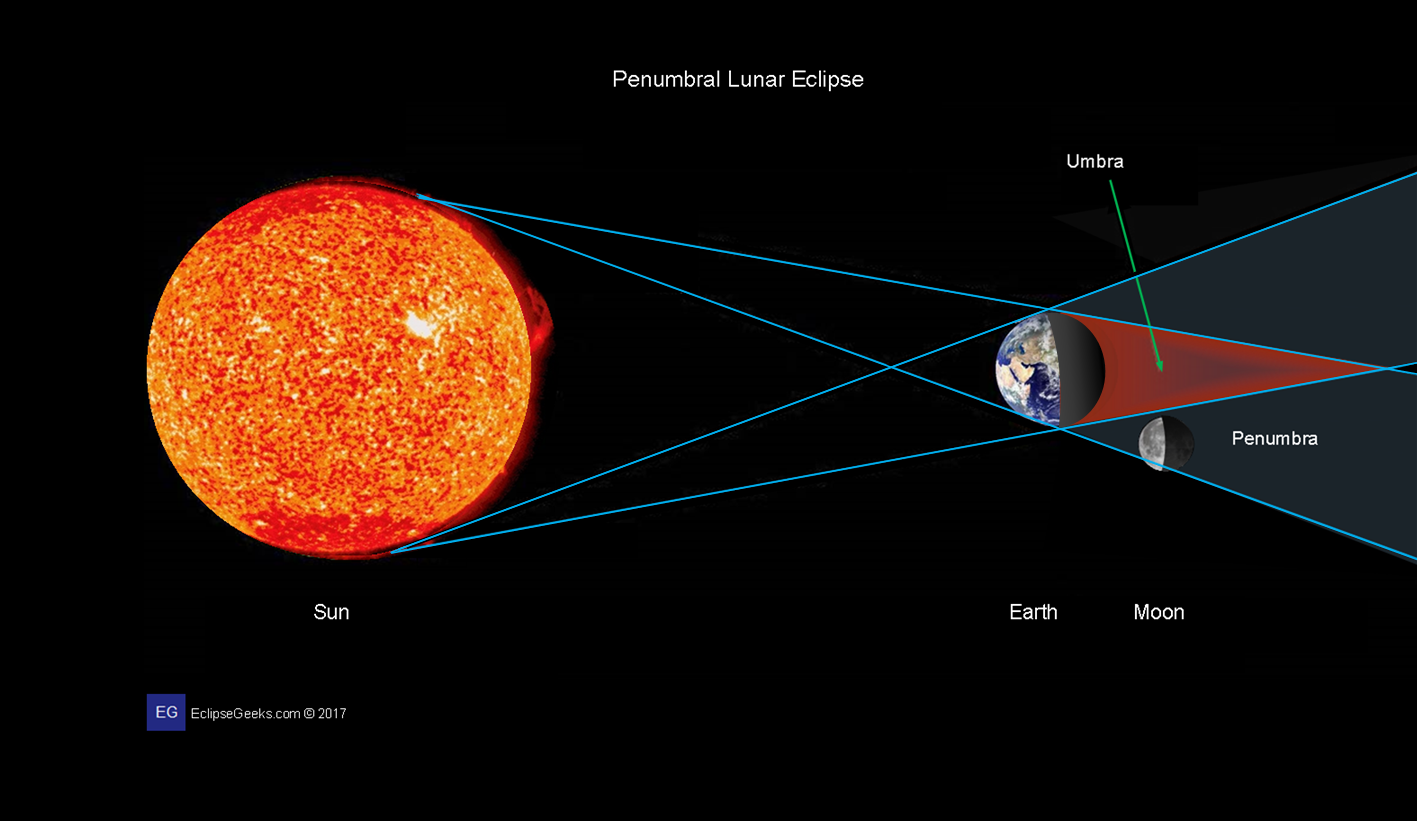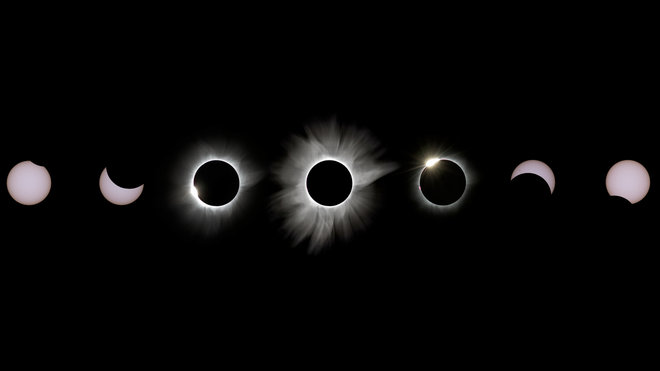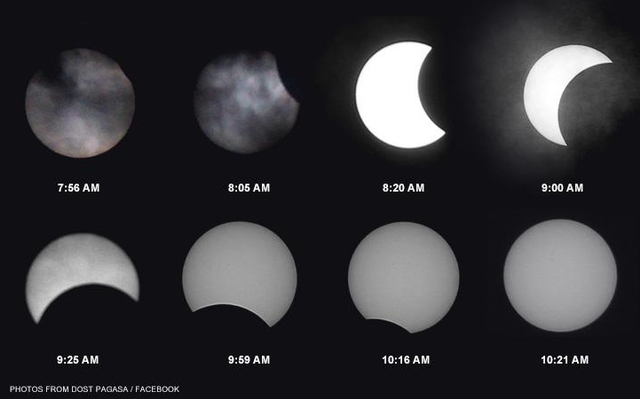
This post has been updated and republished from Sept 2017.
A solar eclipse is the most amazing astronomical sight you’ll ever see.
Not only is it the only time you’ll ever be able to clearly see the “new moon” phase of the moon, it’s the only time you’ll ever see the sun’s corona. And it’s the only time that, under very specific circumstances, you can actually look directly at the sun for a few moments.
But it’s not just an astronomical event. It’s an experience. You can see the moon’s shadow rushing toward you. Nature falls silent. It’s night during the day.
And there’s one coming up on April 8, 2024.
So, let me tell you a bit about what’s happening in the sky—and give you a few important safety warnings!
(If you’re wondering what happened to our unit on active galaxies, not to worry–I’m still publishing the next post this week!)
Not every planet in the universe gets to experience solar eclipses. I doubt they’re a rare occurrence just as I doubt Earth is the only earthlike planet, but Earth is the only planet we know of that gets to see the sun in this way.
We get to see solar eclipses because our moon just happens to appear the same size as the sun in the sky.
Imagine—if we had a bigger or smaller moon, or if we orbited much closer to or farther from our sun, solar eclipses would never happen! But it just so happens that they do look about the same size…
How does that even work out? I mean, the sun and the moon aren’t even close to the same size. The moon’s diameter is only a quarter of the Earth’s, and the Earth alone is 109 times smaller than the sun.
Well, it’s all a result of something called angular diameter.


An object’s angular diameter is just the angle formed by your eye and the object’s opposite sides in the sky. For faraway objects, the “small-angle formula” here works for calculating the angular diameter.
But I’m not going to go into the math here. I’ve already calculated it, and the moon and sun both have an angular diameter of about 0.5°.

These sizes vary just a little bit, since orbits in the solar system aren’t exactly circular. Just as Earth’s elliptical orbit carries it slightly closer to or slightly farther from the sun during different parts of the year, the moon is sometimes closer to or farther from us.
In general, neither the moon nor the sun stray far from an angular diameter of 0.5°.
Obviously, we don’t have a solar eclipse every day. If we did, the nationwide phenomenon of the solar eclipse wouldn’t have driven the United States to the brink of insanity on August 21, 2017.
The angular diameter just means that the moon appears the right size to almost completely cover the sun in the sky. But they don’t always line up.
And even when they do line up, it’s not always perfect! Partial solar eclipses are more common than total solar eclipses. In a partial solar eclipse, the moon’s shadow will never cover the sun completely, and the image below might well be the “fullest” part of the eclipse:

A solar eclipse is different from a lunar eclipse in that when a lunar eclipse happens, anyone on the nighttime side of Earth can see it. The moon passes through Earth’s shadow.
But when a solar eclipse happens, the Earth is passing through the moon’s shadow. And since the moon is so much smaller than the Earth, its shadow doesn’t cover the entire Earth like the Earth’s shadow covers the entire moon.
You have to be standing underneath the moon’s shadow to see a solar eclipse.
That’s really not hard to do, especially since they’re easy to predict. If you book travel arrangements ahead of time, you just have to be standing in a spot about 270 km across…

See that dark spot on the Earth? That’s the moon’s shadow. It’s just about impossible to miss.
The problem is, as obvious as that spot of darkness is, it still doesn’t cover the whole Earth. And only the people lucky enough to be standing in that spot will see the eclipse. Observers elsewhere will see no eclipse at all.
And even if it’s a total solar eclipse, not everyone standing under this shadow will see it. Many will only see a partial eclipse.
Here’s why…

This diagram shows two parts of the moon’s shadow. The inner, darker region is the umbra, and that sweeps out the path of totality. But the outer, lighter region is called the penumbra, and observers in this area will only see a partial eclipse.
Every shadow has a penumbra, including the Earth, but it only really makes a difference during solar eclipses. During a lunar eclipse, the penumbra is just too light to be seen as much of a shadow, and doesn’t show on the moon at all.
During a solar eclipse, if you’re standing anywhere in the penumbra, you’ll still see a solar eclipse. You just won’t see totality, when the moon completely covers the sun, even if the eclipse is total within the umbra.

This diagram shows you how we end up with both an umbra and a penumbra. Because the sun is so big, think of it as multiple light sources—for example, street lamps.
Imagine that you’re on the Earth, and you’re standing in the light of two street lamps. There’s a part of your shadow that’s especially dark, because you’re standing in the way of both lamps. But there’s also a part of your shadow that’s cast because of either one light or the other, and it’s much lighter.
The same thing happens with the sun and the Earth. The penumbral shadow results when you’re still getting light from one side of the sun, but the other side of the sun is blocked. Because the sun is a disk and not two street lamps, the penumbra forms a ring around the umbra.
That’s why, even though the shadow of the moon on the Earth is so huge, the shadow of totality itself is much smaller.

What you see here is the path of totality. You might have heard of it before. This is the path that the moon’s umbral shadow traced over the United States on August 21. It was 65 miles across, and observers standing along this line saw a total solar eclipse.
You might see any one total solar eclipse differently if you’re in different parts of the world. If you’re in the umbral shadow, you’ll see it at its most spectacular, and over the course of a few hours it’ll look something like this:

Here, you see the moon gradually sneak over the disk of the sun until the sun is completely covered. Well, almost completely. What remains is the corona, and it’s not bright enough to damage your eyes—so yes, during those few minutes of totality, you can look directly at the sun!
Remember: If you are not seeing the “total” phase of the eclipse, do not look directly at the sun! Use protective glasses or solar filters designed specifically for your eyes, camera, or telescope.
Important: Make sure your solar viewing equipment conforms to safety standards! Use this list of trusted suppliers from the American Astronomical Society.
If you’re standing in the penumbral shadow, you’ll see something more like this. (Sorry about the clouds; it happens. We’ve got lots of ’em on this planet.)

And if you’re standing outside the penumbral shadow, you won’t see an eclipse at all.
The sun will rise and slink its way across the daytime sky, and you can be sure the new moon is somewhere up there as well. But it’ll never cross in front of the sun, because its shadow won’t fall over you.
There’s a lot more to discuss about solar eclipses, and I cover them from start to finish elsewhere on this blog. You can find out about what makes an annular eclipse special, exactly what you can expect from a solar eclipse, and ways to predict future eclipses.
And if you find your way to the path of totality on April 8, 2024, I hope you thoroughly enjoy it!
Indeed. This is why astronomers wish each other “clear skies” 😉
LikeLike
Hmm . . . weird disconnect between the date of the article and the dates on the comments . . . time travelers?
Anyway, thanks for the link to the list of certified manufacturers of eclipse glasses. It was nice confirming the ones I have are not a cheap knock-off that will fry my eyeballs. Yes, I’m in the path of the total eclipse (nearly dead center of the shadow).
Also, great write-up.
LikeLiked by 1 person
Ha! This was republished from 2017, when I republished it from a much earlier date for the Aug 21 eclipse occasion. Lucky you; I’m envious! I won’t be able to make it to totality because I can’t get time off work to travel.
LikeLike
Sorry to hear.
You could try simulating it . . . at the appropriate time, slowly (over the course of a few hours) close and open your eyes, keeping them closed for about 4 minutes in the middle of the blink.
Seriously, I’m looking forward to it. I just hope it won’t be cloudy.
LikeLiked by 1 person
Excellent article. Funny too.
LikeLiked by 1 person
Funny, huh? Good, though I’m not sure how I managed that.
LikeLike
Wow ! I’m loving your posts 🙂 learning so much about interesting stuff ! 🙂
LikeLiked by 1 person
I’m glad! My goal is to post every day this month, so there will be plenty of content for you! By the way, I love your posts too 😊
LikeLiked by 1 person
That’s great 🙂 ! Hoping to read more stuff from you. And glad to hear that you like my posts. I think you’d enjoy if I wrote about my work i.e. satellites ! Your posts motivate me ! Someday I’ll share my satellite stories too ! 🙂
LikeLiked by 1 person
Oh my god thank you! I’ve never been told that. I’d love to read them if you write them! 😊 And my loose plan is to keep posting daily even after this month, just as long as school doesn’t stand in the way. I have some biology posts coming up because I need to study for my first unit test, hopefully those will be just as enjoyable!
LikeLiked by 1 person
Alas, in our neighborhood, the eclipse was a darkening in an already darkened sky, followed by a downpour of epic proportions. Nice info on eclipses, however. We’re ready now for the next one.
LikeLike
There is a reason astronomers wish each other “Clear skies!” Well, fortunately for you, I’ll be posting a sequence of synodic lunar photos, and the eclipse sequence will be among them. I think I got some pretty good pictures. 🙂
LikeLike
Are you putting all this into a book? If not, you should!
LikeLike
Thanks 🙂 I never thought about it, but I will consider it!
LikeLike
Thanks for all the info! I suppose Australia is missing out on this?
LikeLike
Unfortunately, yes. However, I have a collection of photos from the moon’s synodic cycle (see “The Moon and it’s Shading“) waiting to be posted and because we have a special new moon this month, you’ll get to see a sequence of eclipse shots that way. 🙂
LikeLiked by 1 person
Can’t wait to see them 🙂
LikeLike
They will show up either tonight or tomorrow evening, whenever I have time.
LikeLiked by 1 person